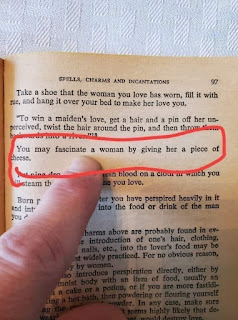A few days ago, I dropped this random gag:
I shall make a character for an RPG who has powers related to artistic creativity, but instead of music and song, they come from arranging cheeses and cured meats.
— Turhan's Bey Company (@turhansbeycmpny) December 21, 2021
A charcuterie bard.
But then I remembered that there's absolutely precedent for food-based magic:
So, then, obviously we can have food-based bards in GURPS, right? The best approach I see is modifying the Enthrallment skills (p. B191). However, rather than requiring Public Speaking at 12+ as a prerequisite, a charcuterie bard requires Cooking and Professional Skill (Food Stylist) at 12+; see Ferrous Metal Food Fighting Guy for a bit on the latter. The skills are used by preparing and feeding an audience with tasty, tasty foods. The elements of food in question cost a minimum of 1% of COL per target, though higher quality ingredients provide a bonus (use costs and reaction bonuses for styling, GURPS Low-Tech, p. 14). Replace the initial roll against Public Speaking to engage the audience with a roll against Professional Skill (Food Stylist), because presentation is key.

Comments